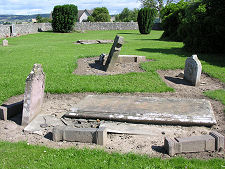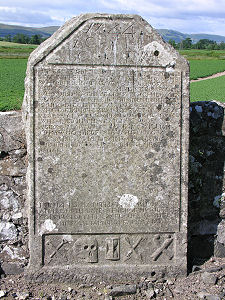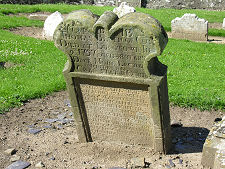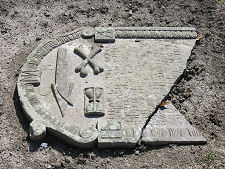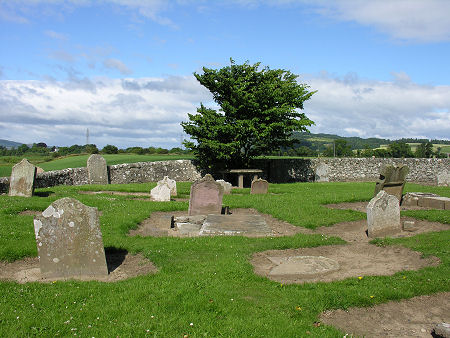 Rhynd Churchyard at East Rhynd |
The graveyard that once surrounded Rhynd's old (pre-1841) Parish Church stands at Easter Rhynd. This is two miles from Rhynd, and about as far east as you can go on the increasingly narrow neck of land bounded by the River Tay to the north and the River Earn to the south. You reach it on minor roads that either head east from Bridge of Earn or south-east from Perth.
Surrounded by a substantial wall and accessed via a gate at its north-east corner next to the road, your first sight of Rhynd Churchyard can be a slightly puzzling one. For one thing, when viewed from the churchyard gate there seems to be no old church, and for another there appears to be very few gravestones. An immediate reaction is to wonder whether you have come to the right place.
The remains of the old parish church, such as they are, lie under two impenetrable clumps of ivy. Between them, in part of what was presumably once the nave, is a sundial and a coat of arms set into a wall. There is certainly nothing to suggest that a church was built here in the early 1600s and served its parishioners for some two centuries. Still less is there any obvious evidence of the even older church believed to have stood on this spot, possibly since being established by Benedictine Monks in the mid 1100s.
The apparent absence of gravestones is also a little odd. But while it is certainly true that the north half of the churchyard is largely unoccupied (much of it was either never used or has been cleared) the southern half does contain a number of fascinating gravestones, even though some of them are broken or have fallen over. Especially interesting is a stone commemorating a blacksmith. This carries a carving, now partly sunk into the ground, of two smiths working in tandem. Above them is a crown, long a symbol of the hammermen's guild to which smiths belonged.
Another noteworthy stone carries a beautifully carved depiction of a boat with a figure at its rear sailing through choppy waters. This is the gravestone of a ferryman, perhaps one of those who once operated the ferry across the mouth of the River Earn between Easter Rhynd and Ferryfield of Carpow, on its southern shore. As ever in old graveyards, it is fascinating to gain an insight, however slight, into the lives of people who lived centuries ago. One stone, lying broken on the ground, notes: "Hear lyes the bones and ashes of John Lenox" and carries a date that may be 1769. Another stone, on which the name John Blyth features most prominently, seems to record the passing of a number of people at various dates between 1716 and 1757.
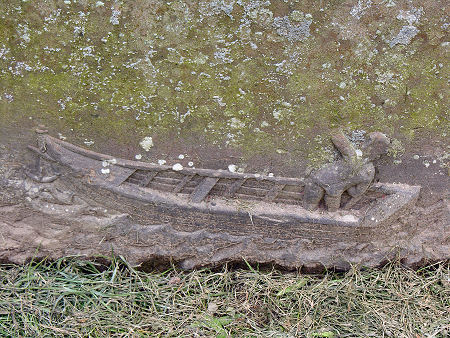 Carving of a Ferryman on the Stone Shown in the Side Column |

|
|
|
Visitor InformationView Location on MapGrid Ref: NO 183 185 What3Words Location: ///paces.another.deflect |
 Among the Ivy
Covered Ruins Among the Ivy
Covered Ruins |
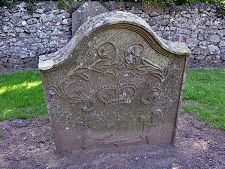 Stone
Commemorating a Blacksmith Stone
Commemorating a Blacksmith |
 Stone Commemorating a Ferryman |
